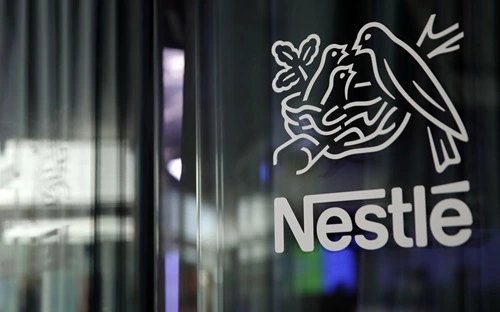Nestlé India, a subsidiary of the global food and beverage giant Nestlé S.A., has cemented its place as one of India’s leading FMCG companies. With an extensive portfolio encompassing iconic brands like Maggi, Nescafé, KitKat, and Lactogen, the company has a strong presence across categories including food, beverages, nutrition, and dairy. Its extensive heritage, combined with an impressive grasp of consumer trends, has kept Nestlé relevant in the dynamic Indian market. However, rising competition, evolving consumer demands, and external pressures necessitate a closer look at its strengths, weaknesses, opportunities, and threats.

Strengths
1. Strong Brand Equity and Product Portfolio
Nestlé India’s brand portfolio is robust, with brands like Maggi and Nescafé enjoying a near-ubiquitous presence in Indian households. The brand recall and trust that Nestlé has built over decades help it retain loyal customers, making its products an integral part of Indian kitchens. From infant nutrition to beverages, Nestlé’s diverse product lineup allows it to cater to a wide demographic range, ensuring high market penetration.
2. Extensive Distribution Network
One of Nestlé India’s major strengths is its extensive and efficient distribution network, which reaches millions of retail outlets across urban and rural India. Nestlé’s deep-rooted distribution infrastructure ensures that its products are widely available, giving it a competitive edge over newer or smaller players. The company has also adapted well to the rising popularity of e-commerce, expanding its digital distribution channels to reach a growing online consumer base.
3. Focus on R&D and Innovation
Nestlé invests significantly in research and development, allowing it to adapt to changing consumer preferences. By introducing healthier options, flavor innovations, and products with enhanced nutritional value, Nestlé has stayed relevant in an increasingly health-conscious market. Its R&D capabilities help it tailor products specifically for Indian tastes, such as regional flavors for Maggi noodles, which has bolstered its customer loyalty and market presence.
4. Financial Stability and Consistent Growth
Nestlé India has a strong financial foundation, with consistently robust revenue growth and profit margins. This financial stability has enabled it to withstand market fluctuations and invest in long-term growth opportunities. Nestlé’s consistent dividends also make it a favorite among shareholders, further solidifying its standing as a financially sound company in the FMCG sector.
5. Commitment to Sustainability and Social Responsibility
Nestlé’s commitment to sustainable sourcing, waste reduction, and community development aligns with India’s growing emphasis on corporate social responsibility. Initiatives like plastic recycling programs and water conservation projects resonate with environmentally conscious consumers, enhancing Nestlé’s reputation as a responsible corporate entity.
Weaknesses
1. High Dependence on Key Brands
Despite its diversified product portfolio, Nestlé India’s revenue is significantly dependent on a few key brands, notably Maggi, Nescafé, and KitKat. This reliance on flagship brands creates vulnerability; any issues with these products, such as regulatory setbacks or shifts in consumer preferences, could impact Nestlé’s revenue and market position.
2. Price Sensitivity in a Competitive Market
In a price-sensitive market like India, Nestlé’s premium pricing strategy can sometimes limit its appeal, particularly in rural areas where affordability is crucial. Local competitors often offer cheaper alternatives, which may attract price-conscious consumers, especially in economically challenging times. Balancing premium positioning with competitive pricing remains a challenge.
3. Challenges in Scaling Rural Penetration
Although Nestlé has a solid presence in urban areas, it has faced difficulties in deeply penetrating rural markets, where preferences may differ significantly. Limited infrastructure, fluctuating incomes, and local competition pose challenges to scaling its operations in rural India. While Nestlé has made strides in this direction, it still has a long way to go to establish itself as a go-to brand in rural areas.
4. Vulnerability to Regulatory and Food Safety Issues
Nestlé has faced regulatory scrutiny in the past, most notably during the 2015 Maggi noodles controversy regarding alleged safety and labeling concerns. Such incidents can severely impact the company’s reputation and sales, as evidenced during the Maggi ban, which resulted in considerable financial and reputational damage. Given the stringent food safety regulations in India, any lapses can lead to significant business risks.
Opportunities
1. Rising Demand for Health and Wellness Products
Indian consumers are increasingly gravitating toward health and wellness-focused products, particularly in urban centers. This shift opens avenues for Nestlé to expand its portfolio in categories like fortified foods, plant-based beverages, and nutrition supplements. The company’s well-established infant nutrition line and recent launches like Nestlé A+ and Maggi Nutri-Licious underline its potential to further capitalize on health-oriented products.
2. Expansion in Rural Markets
India’s rural markets offer substantial growth potential, especially with rising incomes and improved access to FMCG products. Nestlé can focus on affordable, accessible packaging, value-for-money products, and culturally resonant marketing to expand its footprint in rural India. Strengthening rural reach could provide Nestlé with a steady revenue stream and mitigate its dependency on urban markets.
3. Leveraging E-commerce and Digital Channels
With the rapid digitalization of Indian consumers, the demand for online shopping has soared. Nestlé has already begun expanding its digital presence, partnering with e-commerce giants and developing its own online platforms. By strengthening its e-commerce capabilities, Nestlé can cater to the growing segment of digitally-savvy consumers, especially in urban and semi-urban areas.
4. Product Diversification through Innovation
Nestlé’s R&D strength enables it to develop products tailored to changing tastes and demands. By introducing innovative offerings like plant-based foods, low-sugar options, and personalized nutrition products, Nestlé can attract new consumer segments. This could also help the company maintain a competitive edge as more consumers seek diverse and customized food options.
5. Strategic Acquisitions and Partnerships
Nestlé’s strong financial position allows it to pursue acquisitions and partnerships to broaden its product range and market presence. By acquiring startups or established local brands, Nestlé can tap into emerging niches like organic foods, ayurvedic products, or high-protein snacks, diversifying its offerings and appealing to health-conscious consumers.
Threats
1. Intense Competition in the FMCG Sector
The Indian FMCG market is highly competitive, with both domestic and international players vying for market share. Competitors like ITC, Britannia, and Amul, along with smaller regional players, continually launch new products and adopt aggressive pricing strategies. This intense competition places pressure on Nestlé to constantly innovate and adjust pricing to retain its market position.
2. Macroeconomic and Geopolitical Challenges
Inflation, currency fluctuations, and global supply chain disruptions can adversely impact Nestlé’s production costs and pricing strategies. Additionally, rising ingredient costs, such as for dairy, grains, and packaging materials, pose challenges to maintaining profitability. Geopolitical tensions and trade regulations can also affect imports of certain ingredients, impacting production timelines and costs.
3. Regulatory Compliance and Health Standards
The Indian government has stringent regulations on food safety, labeling, and environmental practices. Nestlé must continually adapt its practices to comply with these regulations to avoid legal penalties and maintain consumer trust. For instance, the government’s push to reduce plastic packaging and promote sustainable practices adds pressure to adopt eco-friendly packaging, which can increase costs.
4. Shifting Consumer Preferences towards Local Brands
With a growing preference for locally-produced products, fueled by the ‘Vocal for Local’ initiative, Indian consumers are increasingly drawn to indigenous brands. Domestic players like Patanjali and Dabur have effectively captured this sentiment, promoting ayurvedic and natural products. Nestlé may need to adapt its marketing and product development to cater to consumers who favor local, culturally resonant products.
Conclusion: Future Outlook
Nestlé India’s strong brand portfolio, distribution network, and financial stability make it a formidable player in India’s FMCG sector. However, to sustain its growth, Nestlé must continue innovating, adapting to health trends, and focusing on sustainability. Tapping into rural markets, expanding digital distribution, and investing in health-focused products could significantly boost Nestlé’s position in the Indian market. While competition, regulatory pressures, and economic factors remain challenges, Nestlé’s proactive approach and strategic foresight can enable it to navigate these issues and continue its legacy as a market leader in India.

